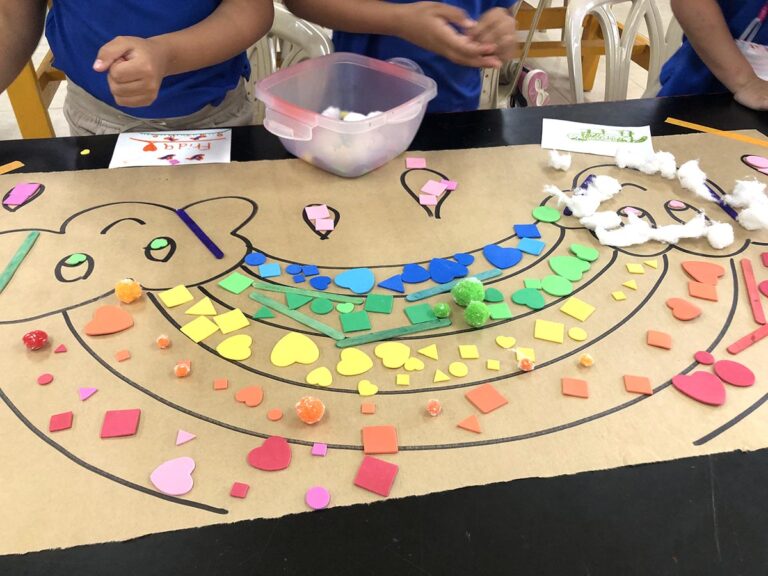As teachers, it’s our job to meet students where they are. From thinking carefully about the sensory experiences students have in our classrooms to creating DIY tools for students with special needs, we do it all. However, what happens when you have a student who literally cannot hold the art materials? What then?
How can we help students with profound motor challenges to create art?
For an answer, let’s look to artists like Christo and Chihuly; artists who give the ideas while others execute them. This type of postmodern collaboration is a great technique to use with students with special needs. Using the postmodern principle of collaboration in the elementary classroom sounds daunting, but it couldn’t be easier.
Using Postmodern Collaboration with Students with Special Needs
In order for this idea to work, your students obviously need to be able to communicate their ideas. Students who have profound fine motor delays often, but not always, also have difficulty speaking. One tool that can be extremely helpful for these students is a PODD device. PODD stands for Pragmatic Organization Dynamic Display. These are usually paper books or electronic tablets that contain a series of choice-based pictures or buttons. By pointing to, looking at, or otherwise choosing images, the student is able to communicate their thoughts. Novita, an Australian organization that helps serve children with special needs, has a great explanation on their website.
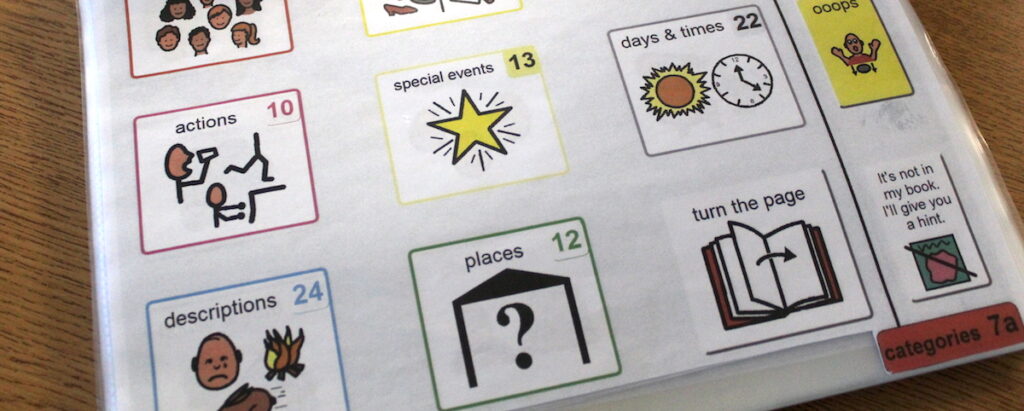
If you have a student who already uses a PODD, you might ask if you can add some art room specific images to help the student communicate their ideas. In addition, the student will need someone to dictate to. Most often this will be the student’s aide.
From there, the idea is simple. Using the PODD device, the student expresses the kind of art they want to make by communicating the theme, shape, size, and color. For example, one of my students and I recently collaborated on a fabulous paper collage mask of an angry hamburger face. Here, I was just another art making tool, executing his idea.
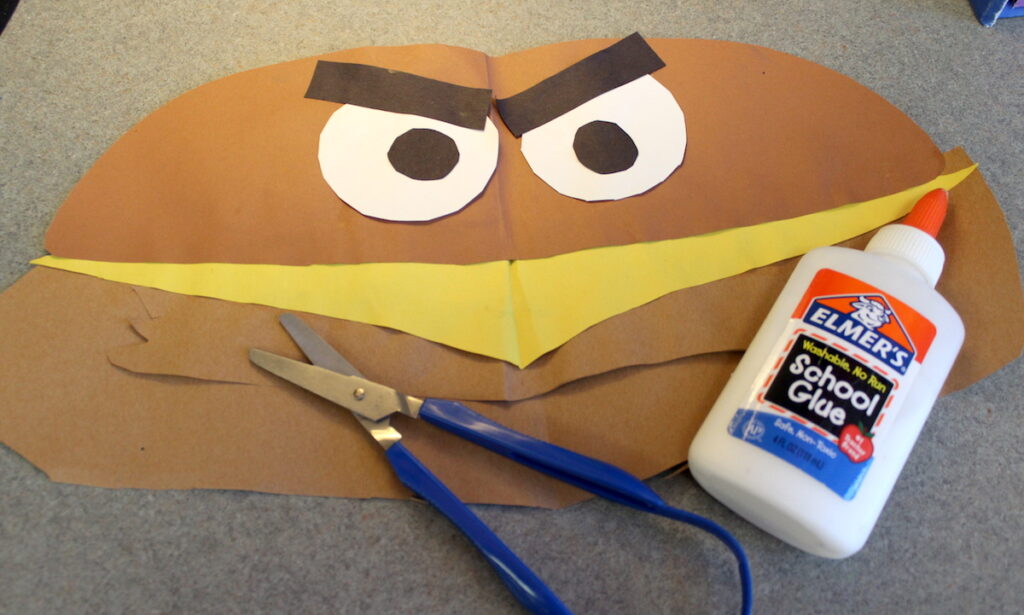
Introducing the Idea of Collaborative Work to Your Entire Class
Collaborating in this way with students with special needs is an amazing way to bring their ideas to fruition. However, doing a project like this can also be a wonderful learning experience for all of your students. They are able to put themselves in the shoes of someone else and have a larger discussion about what art is. Here’s one way to do it.
Begin with a Question
Beginning with a question is a great way to hook students. You might say something like, “If YOU have an idea, and you give it to someone else to make, who does that artwork belong to?” Most often, your students will initially answer that the artwork must be executed with their own hands to be considered theirs.
Introduce Artists Who Work Collaboratively
Next, introduce images from a few artists who mainly provide ideas for their pieces. Christo’s Floating Piers is one nice example, as are Chihuly’s paintings that are translated to glass. When I did this in my room, my students were fascinated and blown away by the relationship between one person’s ideas and another person’s implementation. There were a LOT of questions, and my one-day mini-lesson had to spontaneously grow into a two-day project.
Brainstorm a Class Theme and Assign Partners
I find it’s easiest to choose a simple theme for your students to work within. Initially, I chose robots. Why? Collaboration can be fraught with social and emotional challenges at this age. Robot drawing sets young students up for success because they are made of basic shapes all levels of artists can draw. Additionally, robots can be easily described with basic vocabulary. Good communication is essential for this project!
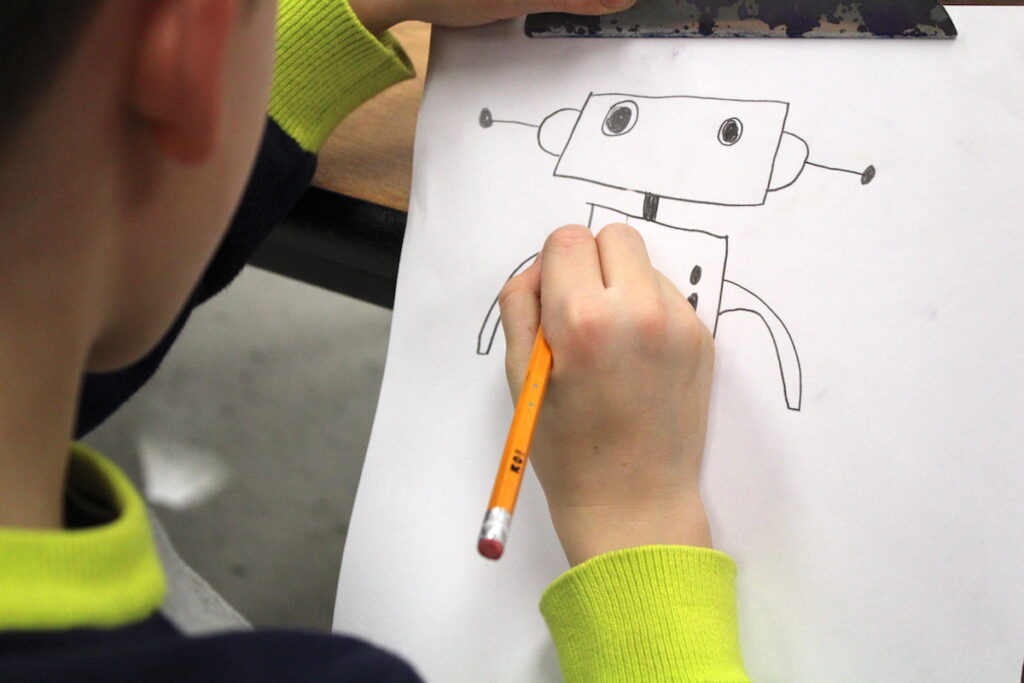
Divide the class into pairs. I like to provide students with clipboards, drawing paper, pencils, and some packets of exciting reference material (in this case, awesome robot imagery). Explain that each student will be making a drawing based only on their partner’s directions, just like the artists they had discussed.
Talk Directly About the Interpersonal Skills Need for Collaboration
You probably can’t drop a project like this into the laps of elementary kids, no matter how emotionally well-adjusted they are, and expect that they won’t hit a few bumps in the road. I discovered the trick to success is to discuss possible challenges and role play solutions BEFORE they arise. Here are some talking points to discuss.
- How do you tell your partner to change something in a kind way?
- When you get frustrated, what should you say?
- What if the final drawing doesn’t look the way you expected? (Spoiler alert – it probably won’t!)
Get to Work!
After discussing these interpersonal strategies, students get to work. Each student should play the role of the “idea generator” and the “hands.” Students can either show each other how the drawings are going or wait until the end for a big reveal.
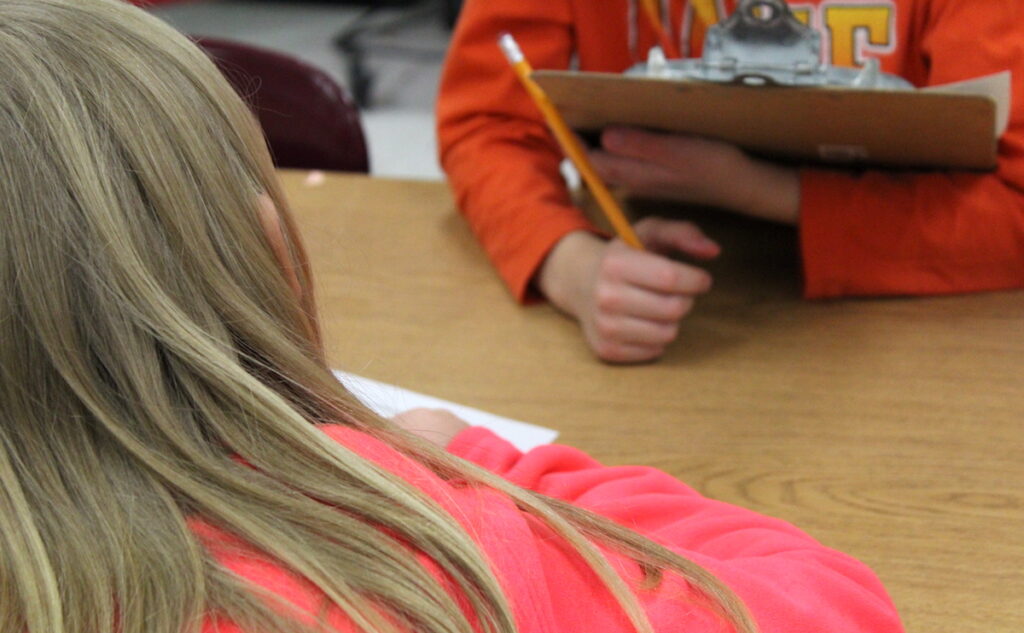
Make Copies and Add Color
After students finish their drawings, make a photocopy of each. That way, each student can have both the robot they made with their ideas AND the one they made with their hands. Then, have students color the robots. To take things a step further, you could even have students collage them together to create robot friendship pictures. Having students be able to keep copies of both robots avoids a lot of tears at this age!
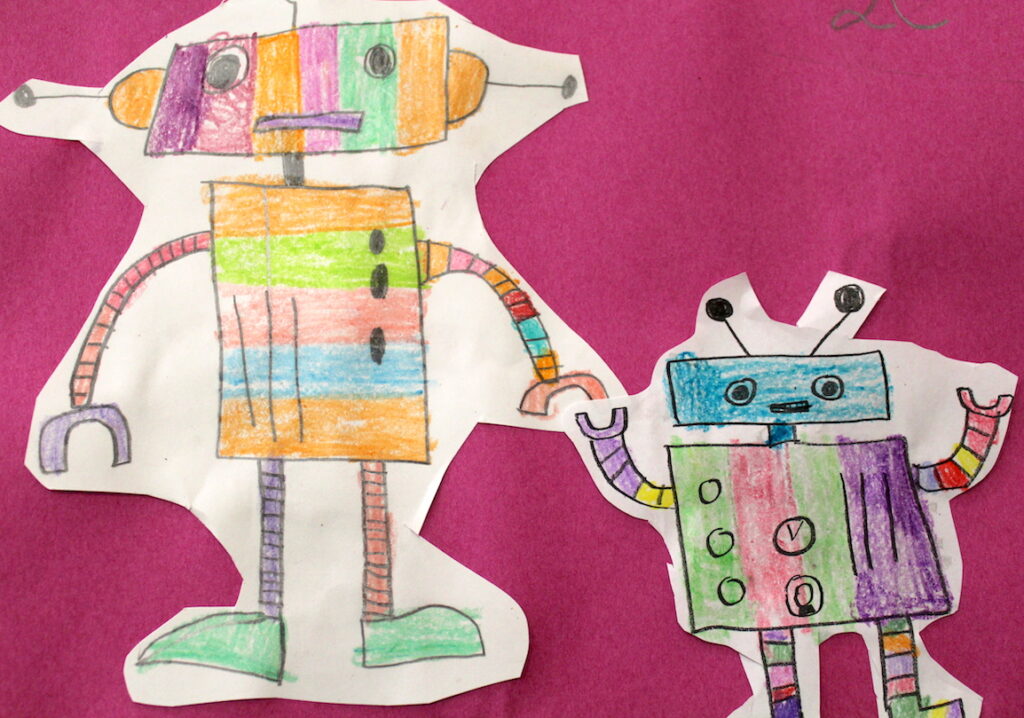
Meet to Process and Discuss
With any good collaborative experience, the reflection can be almost as meaningful as the art making experience. Facilitate a discussion about the challenges and successes of having someone else execute your ideas. In my room, the best part of the conversation came when my students made the connection between this process and what some of my special education students do.
If you do have a population of special education students in your school, don’t miss this opportunity to help your regular education students see the parallel. They have a very modern way of making artwork!
What mini-lessons do you have to help regular ed students understand their special ed peers?
Do you have any strategies for helping students collaborate effectively?
Magazine articles and podcasts are opinions of professional education contributors and do not necessarily represent the position of the Art of Education University (AOEU) or its academic offerings. Contributors use terms in the way they are most often talked about in the scope of their educational experiences.


